Are you ready to add a tangy twist to your culinary repertoire? Try this Quick Pickled Rhubarb recipe! This fun and easy recipe takes the vibrant stalks of rhubarb and transforms them into zesty, sweet, and slightly spicy pickles. With just a handful of ingredients and minimal effort, you can create a jar of these delightful pickles that will elevate your sandwiches, salads, or charcuterie boards to new heights.
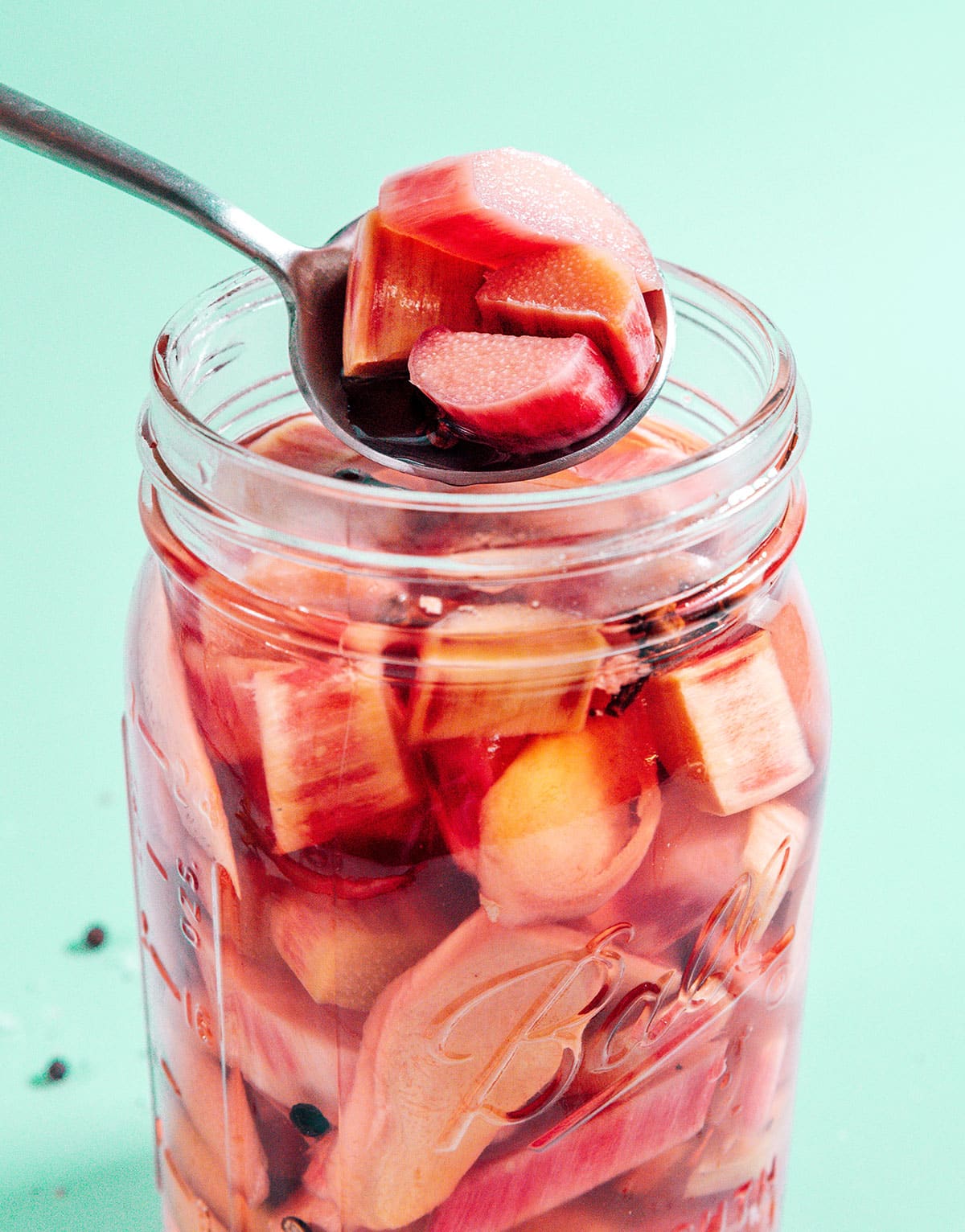
Get ready to embark on a delightful journey of flavors with this Quick Pickled Rhubarb recipe! Born out of a desire to explore new ways of enjoying the rhubarb harvest, this recipe is a tasty twist on traditional rhubarb preparations.
Growing up surrounded by the abundant rhubarb patches of Alaska, I found myself yearning for a break from the usual sweet treats like rhubarb crisps and compotes. That’s when the idea of pickling this vibrant stalk of tart goodness struck me.
Pickled rhubarb not only preserves the short seasoned rhubarb but also brings a tangy, sweet, and slightly spicy element to the mix.
Whether you’re looking to elevate your sandwiches, brighten up your salads, or create a show-stopping charcuterie board, these pickles are a game-changer. With just a few simple ingredients and a short marinating time, you can enjoy the unique combination of rhubarb’s natural tartness with the aromatic spices and tangy vinegar.
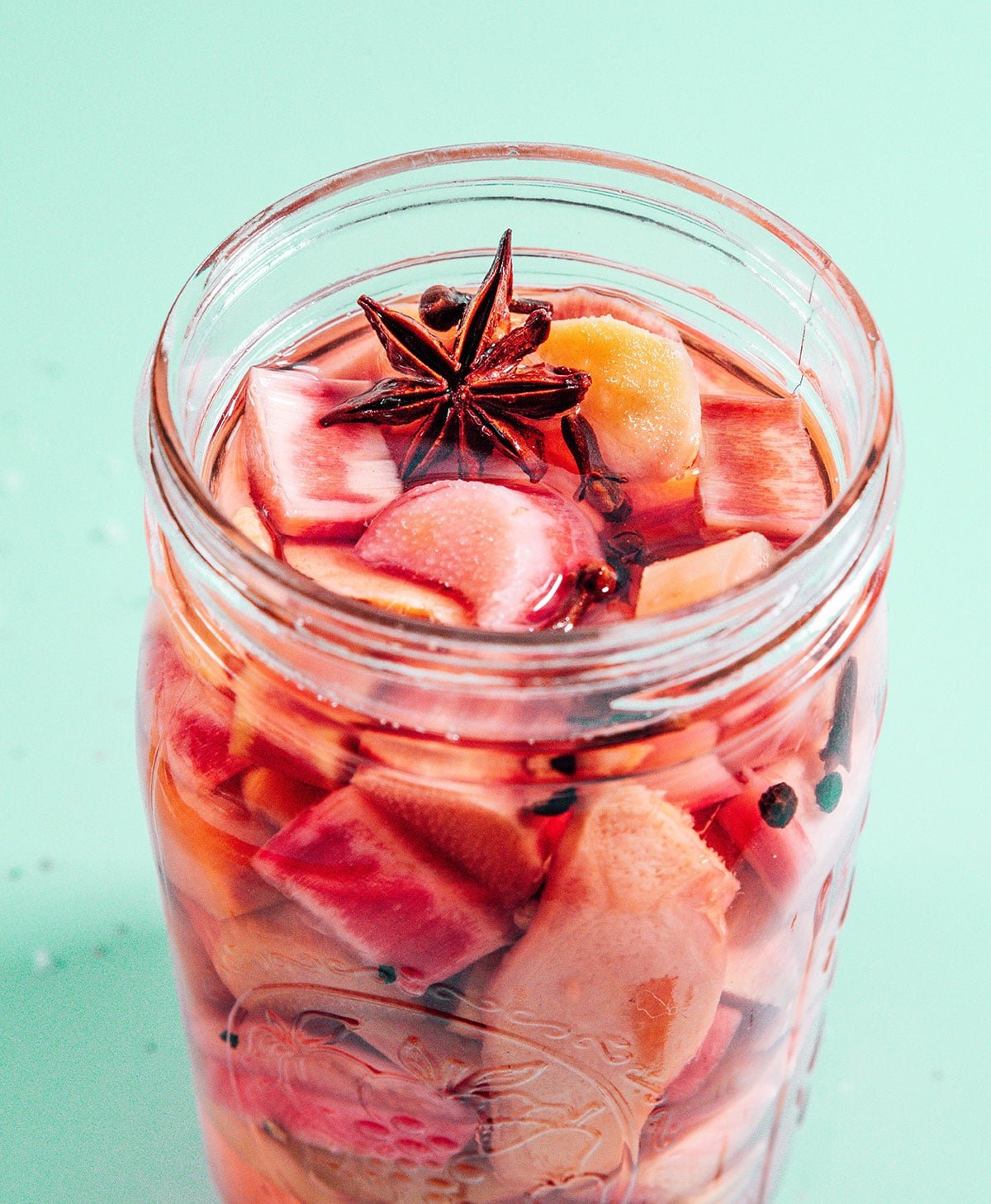
Pickled Rhubarb Ingredients
We’re using a few basic quick pickling ingredients here (like vinegar and water), then flavor it up with some spices that will compliment the rhubarb.
- Rhubarb: The star ingredient of this recipe, rhubarb brings its signature tartness and vibrant color to the pickles. Look for fresh rhubarb stalks at your local farmers’ market or grocery store during the rhubarb season.
- Hot Water: Hot water is used to dissolve the sugar and create the pickling brine. It helps infuse the flavors of the other ingredients into the rhubarb.
- White Wine Vinegar: The tangy white wine vinegar provides the acidic base for pickling. It adds a bright and lively flavor to the pickled rhubarb. If you don’t have white wine vinegar, you can substitute with distilled white vinegar (full list of white wine vinegar substitutes here).
- Sugar: The sugar balances out the tartness of the rhubarb and vinegar, adding a touch of sweetness to the pickles. It also helps to preserve the texture and color of the rhubarb during the pickling process.
- Fresh Ginger: Thinly sliced ginger lends its unique warmth and subtle spiciness to the pickles. It complements the tartness of the rhubarb and adds a refreshing note to the overall flavor profile.
- Whole Peppercorns: These little flavor powerhouses bring a mild, peppery kick and subtle aroma to the pickles.
- Whole Cloves: Adding a hint of warm and aromatic notes, the cloves infuse the pickles with their distinctive flavor.
- Star Anise: With its delicate licorice-like flavor, it imparts a subtle sweetness and floral undertones to the brine.
Does The Type Of Vinegar Matter?
When it comes to choosing the type of vinegar for your pickled rhubarb, consider experimenting with different types of vinegar to create unique flavor profiles. While the recipe calls for white wine vinegar, you can also try using other vinegars like apple cider vinegar (for a fruity mellow flavor) or red wine vinegar (for a pop of bright red color) to add a distinct flavor to your pickles.
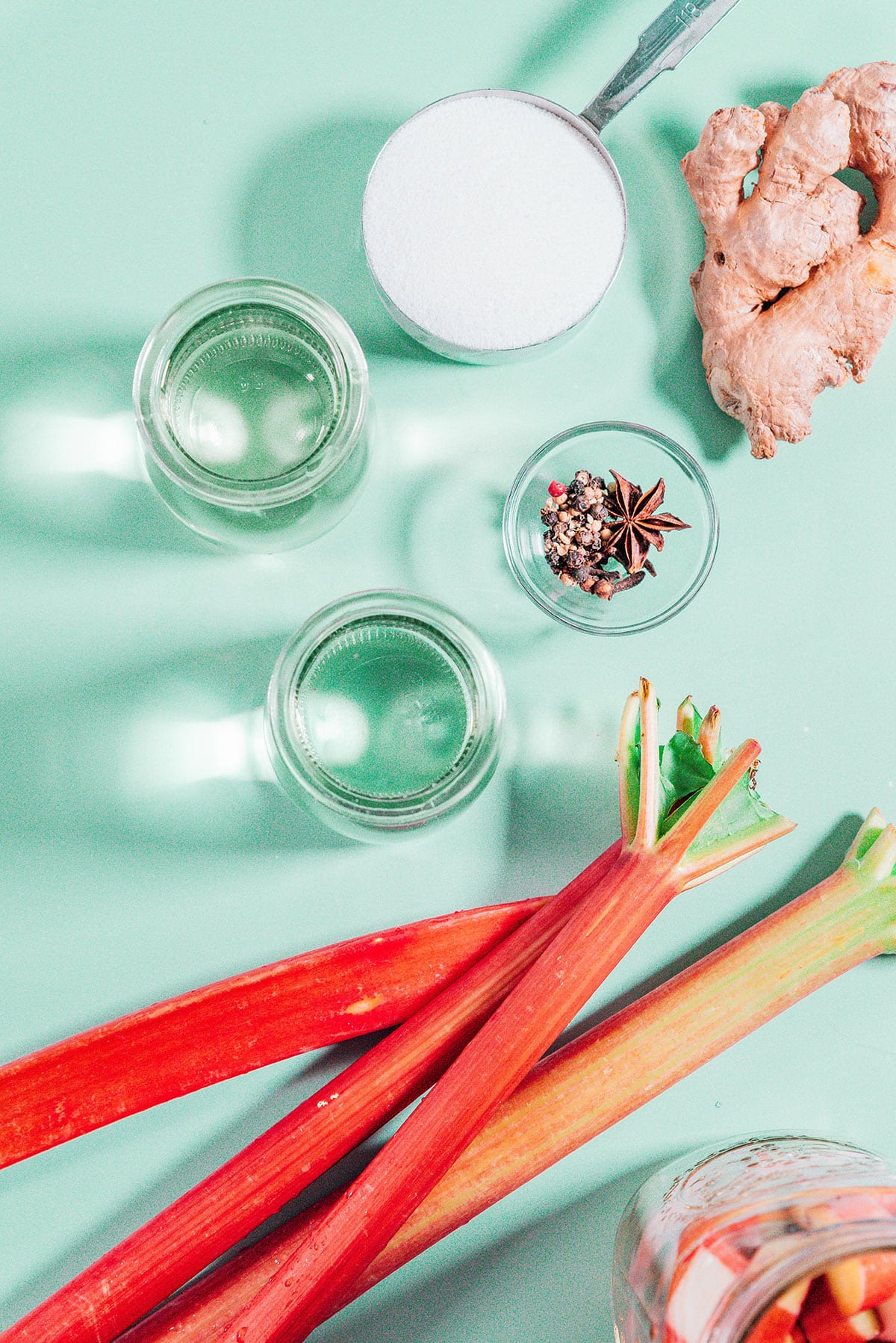
How to make Quick Pickled Rhubarb
Step 1: Add Rhubarb & Ginger To Jar
Stuff the sliced rhubarb and ginger into a 24-oz mason jar, filling it all the way to the top. Make sure to pack the jar tightly to maximize the amount of rhubarb you can fit, allowing them to soak up the pickling flavors and develop a deliciously tangy profile.
Step 2: Make Vinegar Mixture
In a separate container, prepare the flavorful vinegar mixture that will infuse the rhubarb with its aromatic goodness. Combine the hot water, white wine vinegar (or distilled white vinegar), sugar, fresh ginger, whole peppercorns, cloves, and star anise. The hot water helps to dissolve the sugar and infuse the spices, while the vinegar adds a pleasant tang and acts as a natural preservative.
Step 3: Pour In Vinegar Mixture
It’s time to bring together the rhubarb and vinegar! Carefully pour the prepared vinegar mixture into the mason jar, ensuring that it completely covers all of the rhubarb and ginger. As the rhubarb sits in the pickling liquid, it will absorb the tangy essence, resulting in a delightful sweet and sour taste.
Step 4: Pickle
The hardest step of all…wait! Place the tightly sealed jar of pickled rhubarb in the refrigerator and allow it to marinate for at least an hour before serving. If you can resist the temptation, letting it sit for a longer period, such as overnight, will intensify the flavors and create an even more delicious pickled rhubarb. The result is tender, tangy, and slightly crisp rhubarb that has been transformed into a versatile condiment.
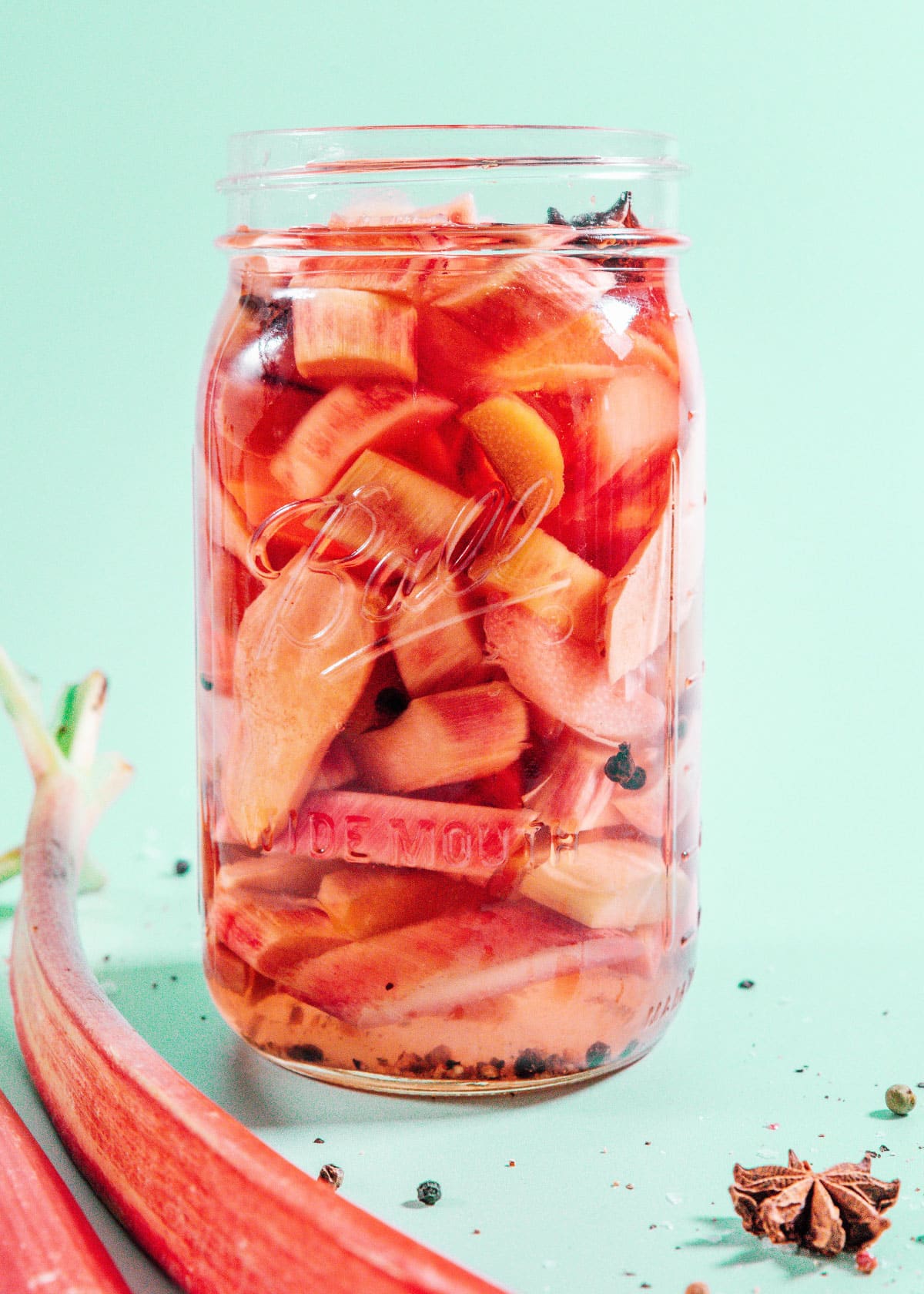
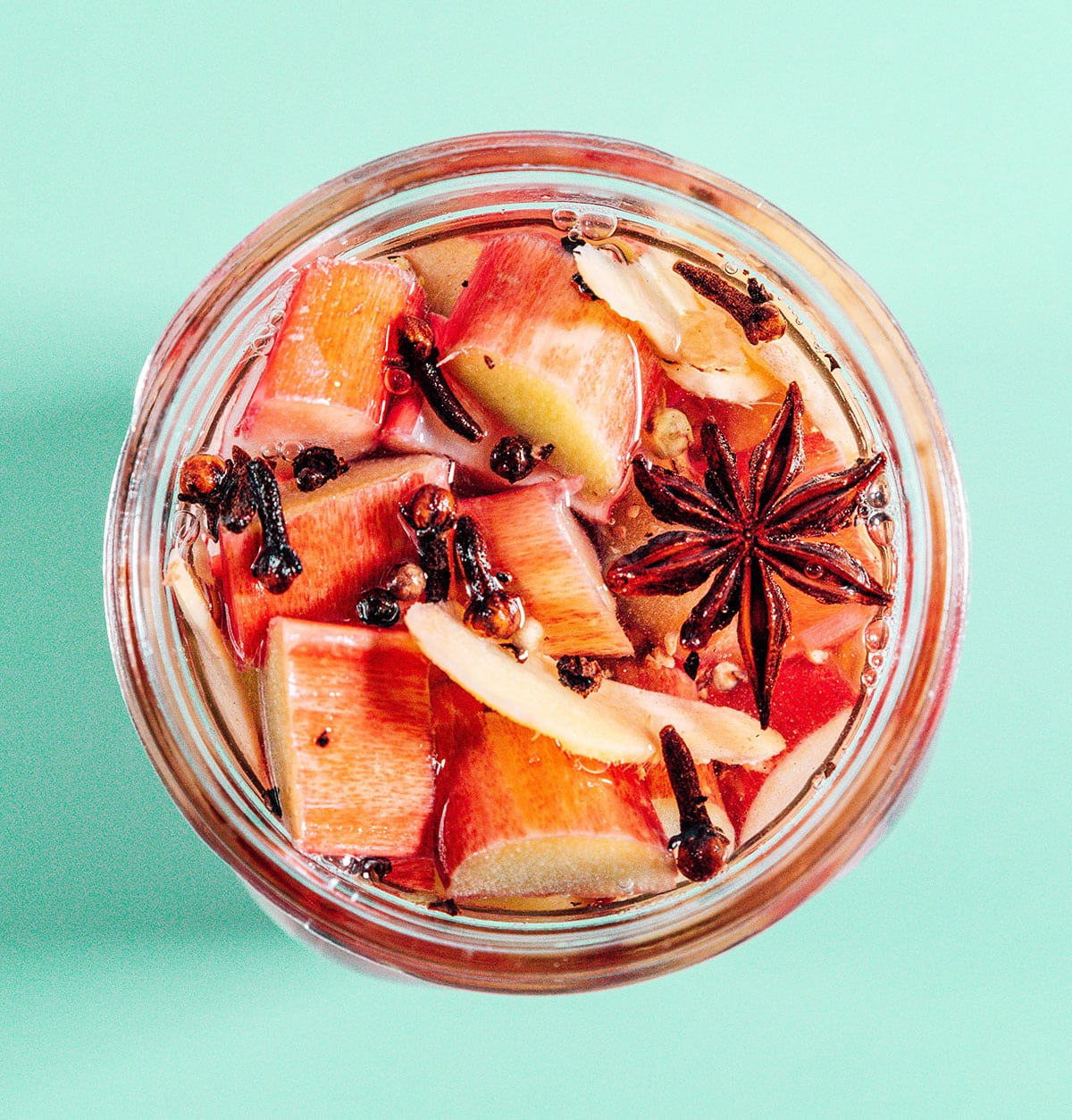
tips & tricks
- Adjust the sweetness and tanginess according to your preference by adjusting the amount of sugar and vinegar in the pickling liquid. You can add more sugar for a sweeter taste or more vinegar for a tangier flavor.
- Feel free to customize the spices and aromatics used in the pickling liquid. Experiment with different herbs, such as thyme or rosemary, or spices like cinnamon or cloves, to create unique flavor profiles.
- Don’t limit yourself to traditional uses of pickled rhubarb. Get creative and experiment with different dishes and combinations. It pairs well with salads, sandwiches, charcuterie boards, tacos, and more. Let your taste buds guide you in discovering exciting ways to enjoy this tangy and versatile condiment.
Quick Pickling vs Traditional Pickling
This quick pickled rhubarb is classified as a “quick pickle”, rather than a traditionally pickled recipe. Pickling typically involves a longer process of preserving food through fermentation or immersion in a brine solution, which results in a more intense and complex flavor development over time. On the other hand, quick pickling, as the name suggests, is a shorter and simpler method that involves marinating the food in a vinegar-based solution for a relatively shorter period, resulting in a milder and fresher flavor profile.
Can you can this pickled rhubarb?
This pickled rhubarb recipe has not been tested for longterm canning. If you decide to can this recipe, be sure to follow USDA best canning practices.
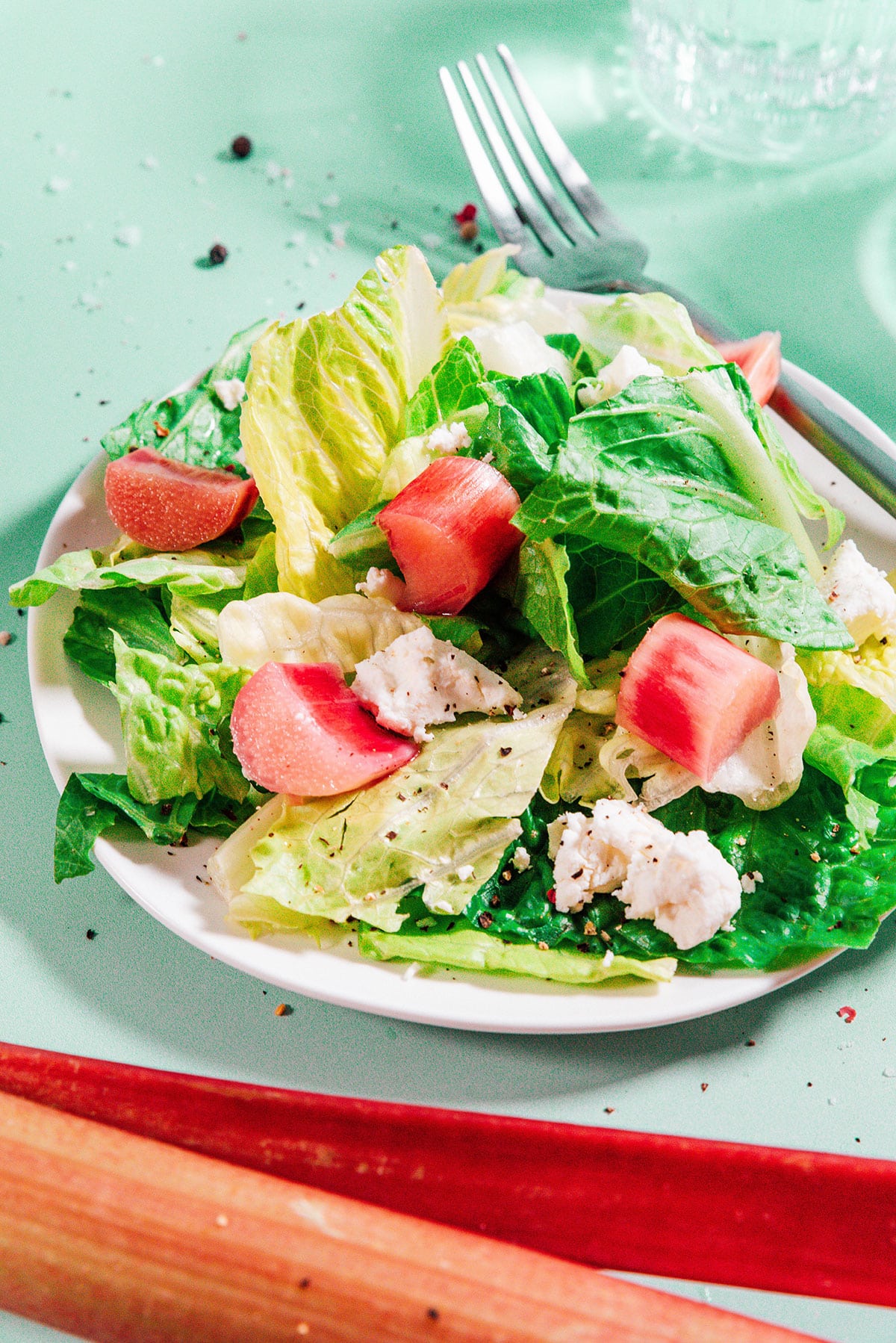
How To Serve Pickled Rhubarb
Pickled rhubarb is quite versatile, and you can experiment with different flavor combinations to suit your taste preferences.
- Salads: Add pickled rhubarb slices to green salads for a burst of acidity. It pairs well with mixed greens, arugula, and spinach. You can also incorporate it into grain salads or coleslaw for an extra zing.
- Sandwiches and Wraps: Include pickled rhubarb in sandwiches and wraps to elevate the flavors and add a little crunch!
- Cheese and Charcuterie Boards: Arrange pickled rhubarb alongside different cheeses and crackers. Its tanginess can balance the richness of the cheese and add a pop of color to the board.
- Grains and Bowls: Add pickled rhubarb to grain bowls or Buddha bowls for a vibrant touch. Combine it with cooked quinoa, brown rice, or couscous, along with roasted vegetables, beans, and a protein of your choice.
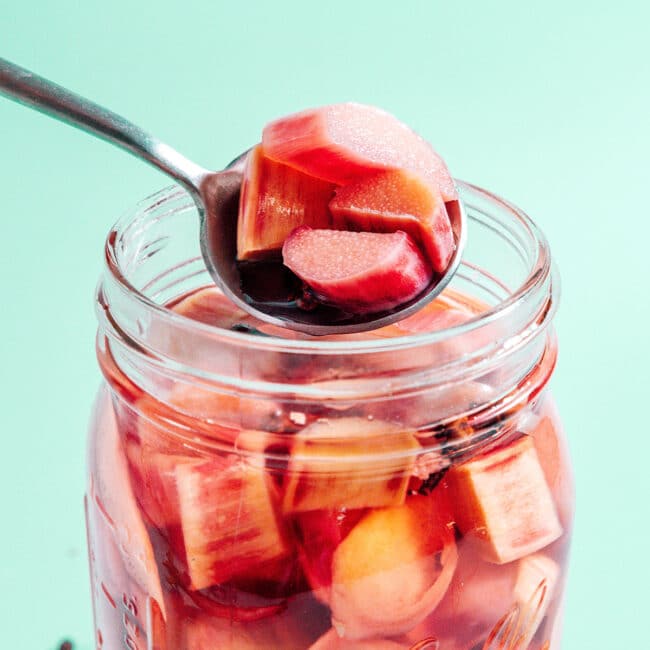
Ingredients
- 3 stalks rhubarb cut into ½-inch pieces
- 2 inch piece fresh ginger thinly sliced
- 1 cup hot water 236 mL
- 1 cup white wine vinegar can sub distilled white vinegar, 236 mL
- ½ cup sugar
- ½ tsp whole peppercorns
- 6 pieces whole cloves
- 1 piece star anise
Instructions
- Add Rhubarb: Stuff sliced rhubarb and ginger into a 24-oz mason jar to the top of the jar.
- Make Vinegar Mixture: In a separate container, stir together all remaining ingredients until sugar has dissolved.
- Pour: Pour the vinegar mixture into the jar to cover all of the rhubarb and ginger.
- Pickle: Set in the fridge and let marinate for at least an hour before serving.
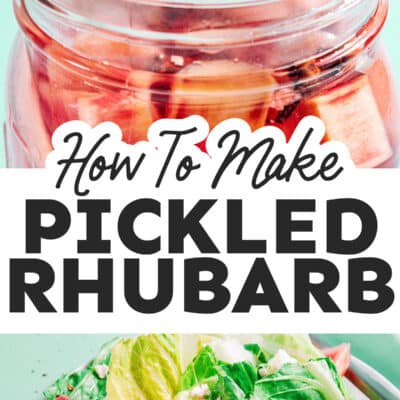
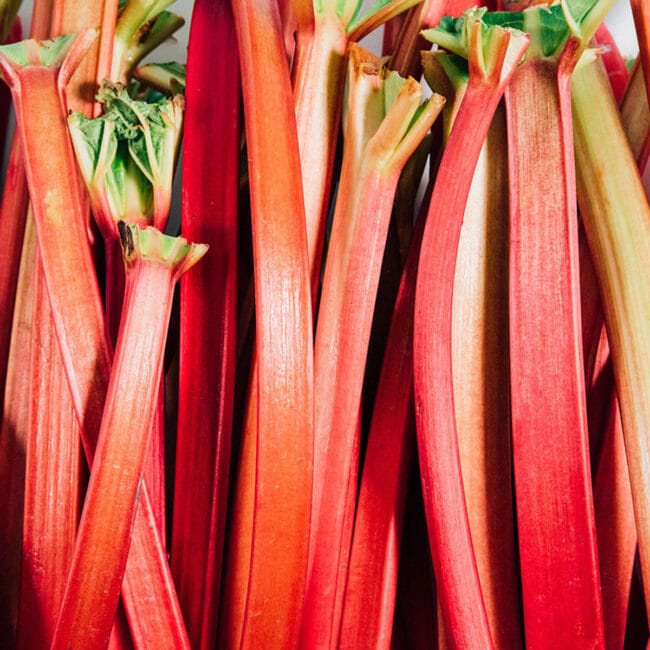
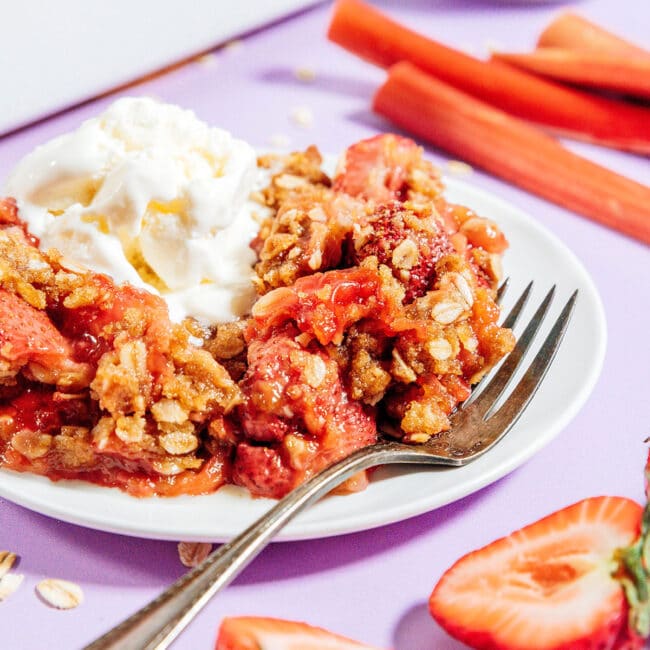
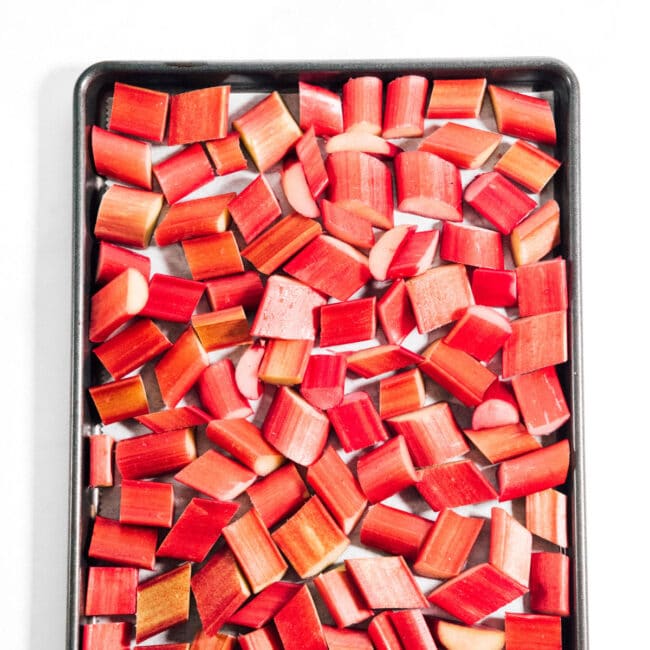
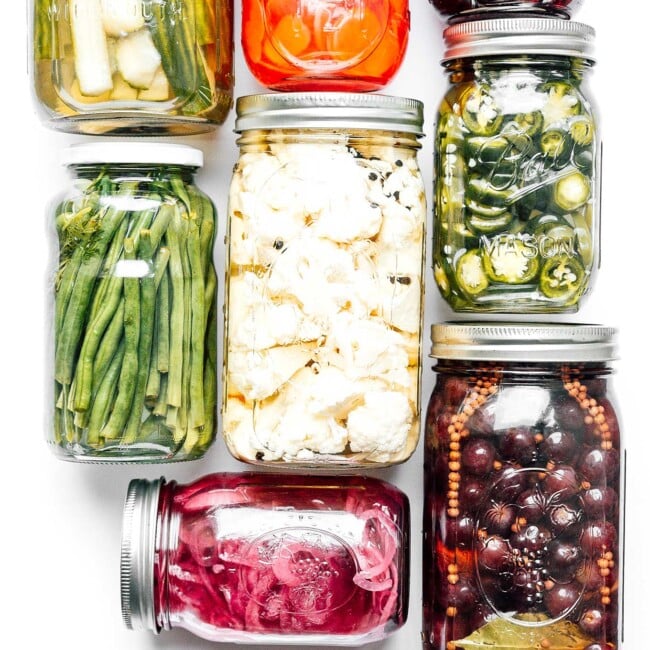
Leave a Comment